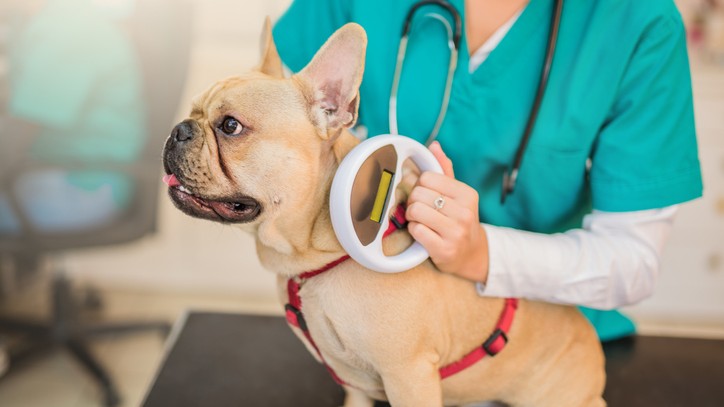GPS dog trackers vs microchipping
We all want to keep our pooch safe, are GPS dog trackers best?

Having your four-legged friend go missing is an incredibly scary experience, but can GPS dog trackers keep your furry family member safe at all times?
However, with so many options available in the best pet trackers market, it can be tricky to know which one would be the best for you and your canine.
To help you decide, we’ve explored the differences between GPS devices and microchips, as well as why both of them should be considered when it comes to the safety and protection of your dog and which might offer the best results for those desperately wondering how to find a lost dog.
- Pawfit 2 tracker review
- PitPat Dog Activity Monitor review
- Jiobit Location Monitor review
- Dog thefts on the rise: Keep your pup safe from dog snatchers
Why do we need to track our pooches?
Most breeds love to explore whilst out on a walk, so it’s common for them to wander off, especially if they’re following their noses and are desperately trying to find the source of the scent they’ve just picked up.
However, if they happen to be off leash at the time and you become separated, a type of tracking or identification device can mean the difference between getting them back and never seeing them again.
That’s where GPS trackers and microchips come in.
What’s the difference between GPS and microchip?
A GPS (Global Positioning System) dog tracker is something a canine wears, which allows their owners to access the dog’s location in real-time, helping to locate them quickly and easily should they go missing.
A microchip, on the other hand, is a small piece of tech – roughly the size of a grain of rice – encased in a glass shell that is inserted under the dog’s skin and contains a unique identification number that will help reunite a lost canine with their owner.
Why choose a GPS dog tracker?
GPS trackers contain clever tech, such as an antenna, that works with satellites to locate itself wherever it may be on the planet. The precise location is then commonly sent from the tracker to a smartphone app, via a local cellular network. It’s just like sending a text message!
These trackers help owners monitor their canine’s precise location in real-time, which can dramatically increase an owners chances of finding their dog should they have run away, gotten lost, or been stolen.
The slight problem with GPS trackers is that they are commonly attached to a dog’s collar or harness. So, should this clever pet accessory fall off or be purposefully removed, then the tracking capabilities become obsolete.
Why choose a microchip?
Microchips play a crucial role in ensuring that a lost, beloved canine finds its way back home to be with their families. Some studies show that the likelihood of a microchipped dog being returned is increased by 50% in comparison to those who aren’t fitted with a chip.
Since this tiny device is inserted under the animal’s skin as opposed to being attached to something removable, it’s not an easy thing for the dog to lose.
However, this of course relies on people knowing what to do if they find a lost dog, including taking it to the vet for their microchip to be scanned so that the vital information can be retrieved and the owners can be notified.
This can be slightly problematic should an owner’s contact information not be kept up-to-date and the owners cannot be reached in the event that their lost dog has been found.
Many countries have made the microchipping of canines a legal requirement to ensure that any lost pooches are reunited with their owners as soon as possible.
Which is best?
Despite what people may say, neither is better than the other as they both serve completely different functions – one is useful when a dog is lost or has gone missing, and the other is great for when a dog has been found.
Both options can be incredibly useful when the circumstances are right. But, this also means that both of these tracking methods can also be slightly problematic when things don’t quite work out the way you’d hoped.
So, until the day that GPS technology can fit inside a tiny microchip, why not opt for both tracking methods to ensure that your dog is fully protected to the best of their abilities at all times.
PetsRadar Newsletter
Get the best advice, tips and top tech for your beloved Pets
Chloe is a freelance writer, editor, and proofreader, who has more than ten years’ experience in creating animal-focussed content. From National Geographic to Animal Planet, Chloe’s passion for creating fact-filled features all about wildlife and the environment is evident. But it’s not just wild animals that Chloe’s fascinated by. Having written more than 75 articles for PetsRadar - and having her very own four-legged friend by her side - it’s no wonder that her love of dogs (and, of course, cats) has grown exponentially.
Her website, www.chloemaywrites.com, and social media pages - @ChloeMayWrites on Instagram, Facebook, and Twitter - showcase her knowledge through daily facts and trivia tidbits. For example, did you know that snails have teeth?!

